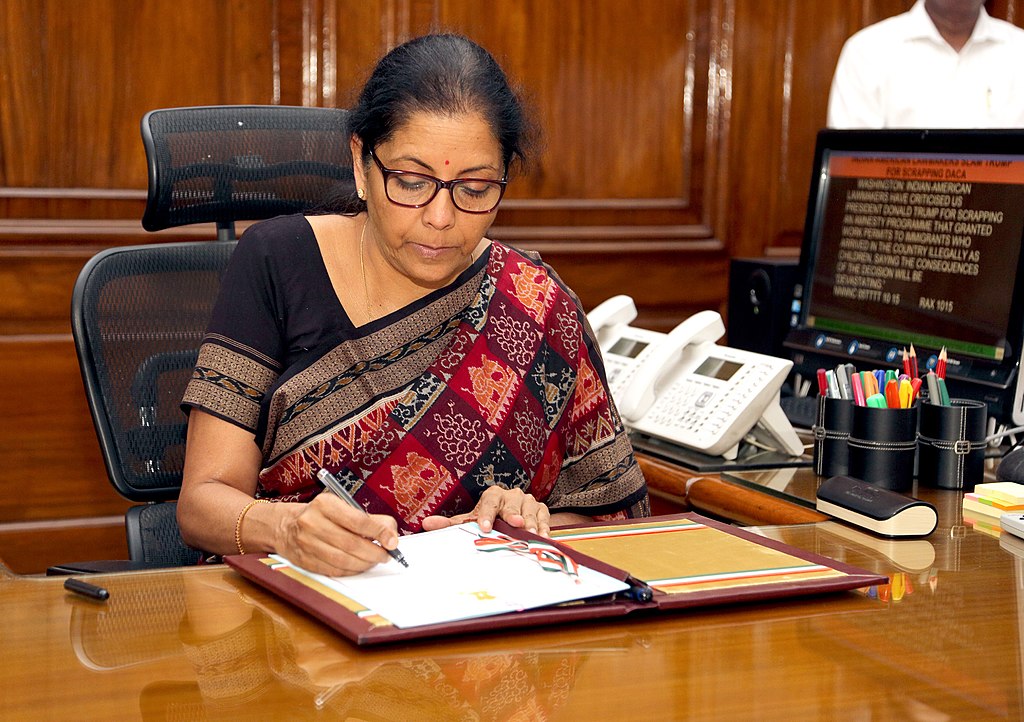(ATF) Even as consumer confidence hits a record low due to job losses, wage cuts and a slumping economy, forcing Indian families to pull their purse strings tighter, Indian Finance Minister (FM) Nirmala Sitharaman announced a string of new measures to spur demand and spending.
Yet, while the techniques used by the FM today are intriguing, experts warn their impact could be at best muted. These measures, after all, are just a “nudge” but India’s consumers need a bigger push to spend more, they add.
In a bid to bolster the pandemic-hit economy, Sitharaman on Monday turned to a combination of frontloading of consumption expenditure with some capital expenditure spending that includes steps like advance part-payment of allowances to federal employees for festive spending and a 50-year interest-free loan to states.
In a bid to spur federal employees to spend more and generate demand, Sitharaman announced a Leave Travel Concession (LTC) Cash Voucher Scheme that will allow them to withdraw their vacation travel entitlements without having to go anywhere.
Those tax-free payments may be spent to buy anything provided it is done digitally before March 31.
The FM also revived a one-time festival advance scheme that gives an interest-free loan equivalent to $140 to every executive-ranked employees and below, a prepaid card that can be used in any festival before the end of the fiscal year.
The money spent from this card, again digitally only, can be paid back in 10 instalments.
Additionally, the governments of all Indian states have been given more than $1.66 billion as special interest-free assistance for spending on roads, urban development, defence and water-supply projects. These initiatives together, would cost the government about $10bn, the FM said.
Temporary boost
“Today’s announcements revealed interestingly designed schemes intended to spur consumer and capital spending, although their fiscal cost and impact on economic activity appears to be fairly modest,” Aditi Nayar, Principal Economist at ICRA, told ATF.
“While the special travel allowance and festival advance schemes will result in a temporary boost to consumer sentiment and economic activity, with a sharper pick up in festive season sales that would subsequently fizzle out,” she added.
Experts argue that the consumption push given by the FM doesn’t represent a fresh injection of money into the system, but an incentive to a puny section of salary-earners, the federal employees, to spend their leave travel concession on consumer products, that too with conditions.
“It is an existing benefit, which is being channelised to consumption, which again is an option and not mandatory. Employees could prefer to use the facility for travel as and when it would be possible – maybe a year down the line rather than spend the money now,” said Madan Sabnavis, chief economist at CARE Ratings.
READ MORE: RBI says worst over yet India’s GDP will plunge
Consumers are in no mood to spend either.
Fearing inflation will remain high over the next year, which could further hinder their ability to spend, Indian consumers are tightening their belts, a Reserve Bank of India (RBI) study revealed on Monday.
The study showed that consumer confidence fell to an all-time low of 49.9 in September because of job losses and wage cuts. Households’ median inflation expectations over a one-year period remained elevated at 10.3%.
With more than 40 million of India’s organised workforce hunting for jobs, the country’s unemployment rate is already at an all-time high, according to the Centre for Monitoring Indian Economy.
Modest state assistance
The proposed 50-year interest-free state loans amounts to peanuts, economists add.
“The eligibility of most states out of the 50-year interest free loans for capital spending appears to be rather modest,” says Nayar of ICRA. “The relatively small magnitude of the long-term loans to be provided by the government to the states, is unlikely to provide any meaningful boost to capex in the financial year 2021, in our assessment, although it may allow for an accelerated settlement of pending dues of contractors or suppliers.”
Sabnavis, of CARE Ratings agrees, saying states may not necessarily invest the cash into fresh projects – though they would add to the investment stream.
“The per capita state allocation may not be very large to change the investment structure in most states, and such funds may be very useful in completing stalled projects on account of lack of funds,” he added.
According to Sabnavis, given that India’s GDP is slated to slide 9% this year, India’s goal should be ensuring that both the federal and state governments fulfill their targeted capex, which in the past were compromised when the fiscal numbers looked weak.
“Overall, the impact (of the sops) will be positive, though the extent will be limited,” Sabnavis said.






















